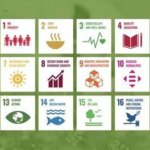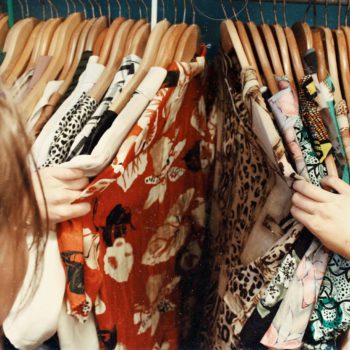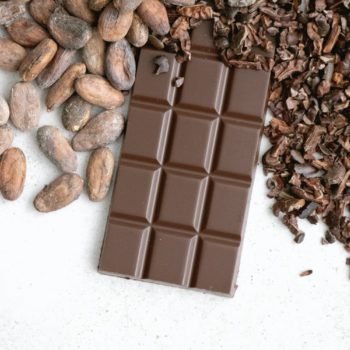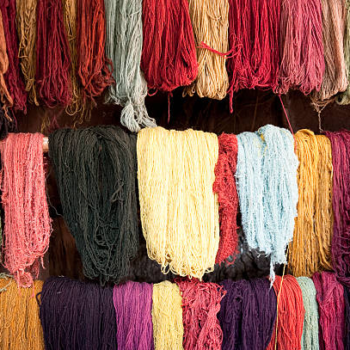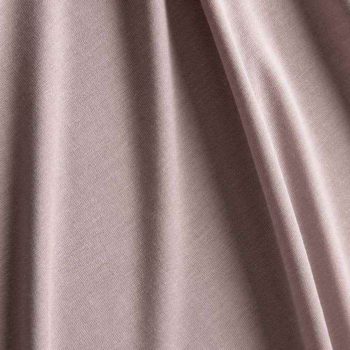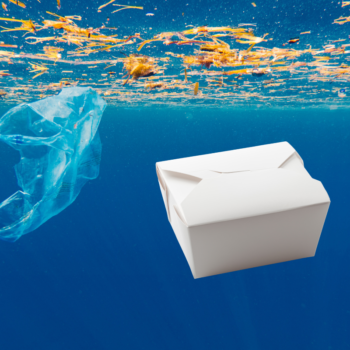|
|
The fashion industry plays a significant role in environmental degradation due to the extensive use of non- sustainable options for fabrics and harmful production practices. However, there is a growing movement towards creating a sustainable growing movement industry’s impact on the planet.
Sustainable fabrics are materials produced with minimal environmental impact and can be recycled or biodegraded. Discover 31 sustainable fabrics that are perfect for the most eco-friendly wardrobe. These fabrics offer minimal ecological impact, from organic cotton and hemp to Tencel and recycled polyester.
What are sustainable fabrics?
Definition of Sustainable Fabric
Sustainable fabrics are textiles that are produced using eco-friendly processes and materials. These fabrics are made from renewable resources and have a significantly lower environmental impact than traditional fabrics. They prioritize using natural fibers and reduce the consumption of resources like water and energy during production.
Benefits of Using Sustainable Materials
Using sustainable materials in fashion has numerous benefits. Firstly, sustainable fabrics are often biodegradable, meaning they can break down naturally without causing harm to ecosystems. They also require fewer pesticides and chemicals during cultivation, reducing water pollution and minimizing health risks for workers.
Additionally, sustainable fabrics contribute to the circular economy by being recyclable or easily compostable, reducing waste and promoting a more sustainable way of manufacturing and consuming clothing.
The United Nations Environment Programme (UNEP) is about leading the way and bringing different groups together to make the clothing industry more sustainable. They want to help ensure that clothes are made and used in a way that’s good for the environment and people. They’re also working to handle chemicals safely and responsibly.
Impact of Non-Sustainable Fabrics
Non-sustainable fabrics, such as polyester and conventional cotton, negatively impact the environment. Polyester, a synthetic fabric made from petroleum, is not biodegradable and can take hundreds of years to decompose. Its production also involves harmful chemicals, contributing to air and water pollution. In 2018, about 52 of every 100 materials made were polyester, adding to a massive 55 million metric tons yearly. By 2020, even more, polyester was made, totaling 57.1 million metric tons.
Conventional cotton requires large amounts of water and pesticides, degrading soil quality and harming wildlife. The fast fashion industry, characterized by cheaply made garments and excessive consumption, perpetuates unethical labor practices and generates massive amounts of textile waste.
Which Fabrics are the Most Sustainable?
1. Organic Cotton
Traditional cotton farming often uses a lot of chemicals, which can harm the environment and people’s health. These chemicals can also stop working well over time, making farming more expensive. Organic cotton, on the other hand, doesn’t allow most of these chemicals. Farmers who grow organic cotton can earn more money for their efforts, making it a good option.
2. Hemp
Hemp is an excellent choice for eco-friendly clothes because it takes in more carbon from the air than it puts out. And when we look at how much land it needs, hemp uses less than cotton. Hemp grows a lot in a small area. Plus, it doesn’t need as much water. A study found that cotton uses 9,758 kg of water for each growing kg. But hemp only needs 2,401 to 3,401 kilograms of water for each kg.
3. Linen
Linen is made from the fibers of the flax plant and is known for its durability and breathability. Flax requires less water and fewer pesticides than other crops, making linen a more sustainable fabric choice.
Additionally, the flax plant is typically grown in cooler climates, such as Belgium and Ireland, where the natural moisture in the air helps to produce high-quality fibers. Linen also has natural antibacterial properties, making it resistant to odors and bacteria growth.
5. Recycled Polyester
Recycled polyester is made from post-consumer plastic bottles and other recycled materials. It has a significantly lower environmental impact. Recycling plastic bottles and other materials to produce polyester reduces the need for virgin polyester production derived from petroleum. This means fewer natural resources are utilized, and less energy and water are consumed during manufacturing. Additionally, recycling polyester reduces the amount of waste going to landfills.
6. Piñatex
Piñatex is a natural fiber made from pineapple plant leaves, which are typically discarded after the fruit is harvested. These leaves are collected, processed, and transformed into a versatile textile material that can be used as a sustainable alternative to leather.
Piñatex is a sustainable alternative to conventional leather as it does not involve animal products. It has a significantly lower environmental impact than leather production, reducing water consumption, chemical use, and greenhouse gas emissions. However, piñatex still requires energy and resources for processing and manufacturing, and its availability may be limited due to the dependence on pineapple farming.
7. Recycled Cotton
Recycled cotton is a sustainable and eco-friendly alternative to traditional cotton production. It is made by collecting and processing post-industrial and post-consumer cotton waste, such as scraps and old garments. These waste materials are sorted, cleaned, and transformed into new usable fibers.
Organic cotton grows without chemicals, supporting biodiversity and soil health. China, Turkey, and India lead in organic cotton production. Despite its eco-friendliness, organic and regular cotton use much water and energy in manufacturing. Thus, recycled cotton is reused from industrial or consumer sources, reducing landfill waste. This often involves repurposing scraps from cut-and-sewn facilities to minimize waste.
8. Viscose
Viscose, also known as rayon, is a type of fabric that is considered semi-synthetic. This means that while it is derived from a natural material (wood pulp), it undergoes a chemical process to transform it into a usable fabric.
In recent years, efforts have been made to improve the sustainability of viscose production. Eco-friendly methods, such as using recycled wood pulp or implementing closed-loop production processes, have been introduced to minimize the environmental impact of viscose manufacturing. Additionally, there are initiatives to ensure responsible sourcing of wood pulp to prevent deforestation.
9. Bamboo
Bamboo is a highly sustainable plant that grows rapidly, making it an excellent renewable resource. Unlike other types of wood, bamboo can be harvested in just 3-5 years, whereas hardwood trees take decades to mature before they can be harvested. This quick growth cycle allows bamboo to be harvested and used for various purposes without leading to deforestation or depletion of natural resources.
One of the significant advantages of bamboo is its ability to grow without the need for pesticides or fertilizers. Bamboo has inherent properties that make it naturally resistant to pests and diseases, reducing the need for chemical interventions. This makes bamboo cultivation environmentally friendly and healthier than crops requiring excessive pesticide use.
10. Econyl
Econyl is a regenerated nylon fabric from fishing nets, fabric scraps, and other nylon waste. It helps to reduce plastic pollution in the oceans and is a sustainable alternative to traditional nylon. Econyl fabric solves the plastic pollution problem by repurposing discarded fishing nets and other nylon waste. It contributes to a more sustainable and circular economy by reducing the need for virgin nylon production, lowering carbon emissions, and minimizing waste.
11. Wool
Wool is a sustainable fabric that shearing sheep obtains. It is a natural fiber that is highly durable, biodegradable and requires less water and energy during production compared to synthetic fabrics.
Wool’s inherent durability prolongs the usability of garments, lessening environmental impact. Research suggests wool items can last for multiple decades, with 20-30 years lifetimes. Wool is recyclable, notably in Prato, Italy, a renowned recycling hub with esteemed textile expertise.
Certified organic wool is even more sustainable, produced without pesticides or chemicals. This makes it a better alternative to synthetic fabrics, which often take a long time to decompose and contribute to pollution.
12. Soy Silk
Soy silk is a sustainable and biodegradable fabric made from the byproducts of soybean processing. It is a versatile fabric known for its softness and moisture-wicking properties.
One of the main advantages of soy silk is its sustainability. Soybeans are a renewable resource, and using their byproducts for fabric production reduces the need for additional raw materials. Additionally, the manufacturing process for soy silk consumes less energy and water than traditional fabrics like cotton or silk.
13. Modal
Image Source
Modal fiber is considered sustainable due to its eco-friendly production process. It’s made from beechwood, a renewable resource, and the manufacturing involves a closed-loop system where the chemicals used are recycled and reused, minimizing environmental impact. Many sustainable clothing brands opt for modal as an eco-conscious and sustainable substitute for cotton and viscose. It’s pricier than materials like cotton and viscose, earning it a reputation for luxury.
14. Seaweed fiber
Seaweed fiber is made from sustainably harvested seaweed, a renewable resource. This means that producing seaweed fiber does not deplete the seaweed population or harm the marine ecosystem. A study believes expanding seaweed farming to capture emissions and create a circular economy is crucial for a sustainable future with a population of over 9 billion by 2050.
Seaweed fiber is sustainable because it’s sourced from abundant marine plants that don’t require land, freshwater, or pesticides to grow. Seaweed cultivation also helps improve ocean health by absorbing excess nutrients and carbon dioxide. Its rapid growth rate and biodegradability make it a promising eco-friendly alternative in the textile industry.
15. Milk fiber
Milk fiber is a type of fabric that is derived from the proteins found in milk whey. It is a sustainable and biodegradable alternative to traditional textiles, such as silk. The production process requires minimal water and energy compared to other fabrics.
Using a continuous graft polymerization technique, this fiber is entirely eco-friendly. It qualifies as a “” due to its absence of formaldehyde. Unlike regular milk, milk protein fiber is derived from milk casein. This specialty fiber can be dyed using acid, reactive, or cationic dyes.
16. Jute
Jute is primarily grown in countries like India and Bangladesh, where it is an important cash crop. The jute plant grows quickly and can reach a height of up to 4 meters in just a few months. Once harvested, the plant stalks are retted, which involves soaking them in water to separate the fibers from the woody core.
The jute plant has a higher yield per hectare than other natural fibers, making it an efficient and resource-friendly crop. It is also biodegradable and compostable, meaning it does not contribute to environmental waste at the end of its life cycle.
18. Cork
Cork is produced by carefully removing the outer layer of bark from the cork oak tree without damaging the tree itself. This process is done by hand every nine to twelve years, allowing the tree to regenerate and produce more cork.
Cork fiber is sustainable because the process doesn’t harm the trees and actually helps them absorb more carbon dioxide. Additionally, cork is biodegradable, renewable, and offers excellent insulation and water-resistant properties, making it an environmentally friendly choice in various applications.
19. Organic Linen
The production of organic linen starts with flax plants that are cultivated using organic farming methods. These methods exclude synthetic pesticides, herbicides, and fertilizers, which can harm the environment and human health. Instead, organic farmers rely on crop rotation, natural pest control, and composting to maintain soil health and fertility.
The GOTS certification assures fabrics are entirely organic, free from pesticides and harmful dyes, and produced through eco-friendly methods. This label makes it simpler to recognize organic and sustainable textiles.
20. Hemp-Organic Cotton Blend
Cotton is a widely used natural fiber in the clothing industry globally. While it grows on just 2.4% of arable land, it’s responsible for 24% of the world’s insecticide use. Industrial hemp is seen as a sustainable alternative to cotton, but processing it comes with challenges due to its coarse texture and poor spinnability, especially in ring-spinning systems.
Hemp-organic cotton blends combine the sustainable and durable properties of hemp with the softness and comfort of organic cotton. This blend is an excellent choice for eco-friendly and long-lasting garments. The hemp fibers add strength and durability to the fabric, making it last longer and reducing the need for frequent replacements. This saves money and reduces waste and the environmental impact of textile production.
21. Wool-Lyocell Blend
By blending wool and lyocell, you get a fabric that combines the best of both worlds. This blend offers the warmth and insulation of wool, making it ideal for colder climates or winter activities. At the same time, the lyocell content enhances the fabric’s moisture-wicking properties, ensuring that sweat is quickly absorbed and released, keeping the wearer dry and comfortable.
22. Soy-Cotton Blend
Soybean protein fiber is an eco-friendly botanical material derived from leftover soybean pulp, a byproduct of tofu and soymilk making. While it’s sustainable and biodegradable, its weakness lies in reduced strength when wet. To address this, it’s often blended with other fibers like cotton to enhance wet strength.
The soy-cotton blend is an innovative fabric option that offers the best qualities of both soy silk and organic cotton. Soy silk, also known as soybean fiber, is a natural and sustainable material made from leftover soybean residue after soybean oil extraction. It is incredibly soft and smooth, resembling silk in texture.
23. Bamboo-Cotton Blend
Bamboo is not just highly durable, but also offers an economical and eco-friendly choice compared to various other available materials.You can enjoy the best of both worlds by blending bamboo with organic cotton. Bamboo-cotton blends are incredibly soft and gentle on the skin, making them suitable for sensitive skin.
The blend’s bamboo fibres help wick away moisture, keeping you dry and comfortable throughout the day. They also provide temperature-regulating properties, keeping you cool in hot weather and warm in colder temperatures.
In addition to their comfort and moisture-wicking abilities, bamboo-cotton blends are also popular for their sustainability. The fast growth and low environmental impact of bamboo and organic cotton’s lack of harmful chemicals make this blend an eco-friendly choice.
24. Organic Cotton-Hemp Blend
Organic cotton and hemp are both natural fibers that are grown without the use of synthetic pesticides or fertilizers. This makes them environmentally friendly and better for the health of the farmers and workers who grow and process these fibers.
The durability and sustainability of hemp complements the softness and breathability of organic cotton. The resulting fabric is solid and long-lasting, making it an excellent choice for garments that must withstand repeated wear and washing.
25. Natural Rubber
Natural rubber is obtained from the latex sap of rubber trees, primarily Hevea brasiliensis. This remarkable material is both sustainable and biodegradable, aligning with the principles of eco-conscious production. The process of harvesting rubber involves making small cuts in the tree’s bark to collect the latex, which then undergoes processing to form the rubber that we’re familiar with.
According to the International Rubber Study Group (IRSG), natural rubber is sourced from the latex of rubber trees and is considered a sustainable and biodegradable material. It is used in various industries, including footwear and accessories, as a more environmentally friendly alternative to synthetic rubber.
26. Recycled Fibers Reinforced with Hemp
Efforts are underway to find solutions, including regulations for environmentally friendly production practices, reducing CO2 emissions, and prioritizing renewable resources. Hemp (Cannabis sativa L.) is gaining attention due to its versatility, quick growth cycle, cost-effective cultivation, potential for carbon-negative transformation, and ability to sequester carbon easily.
By combining these recycled fibers with hemp, the resulting fabric has a higher level of sustainability. It reduces the dependence on virgin materials, ultimately decreasing the demand for new resources. Moreover, adding hemp fibers enhances the durability and longevity of the fabric.
27. Bamboo Silk
Textile innovation spotlights bamboo as a plant-based option to replace synthetic fibers. Bamboo’s sustainability and versatility as a source material are recognized, yet manufacturing debates challenge its green reputation. Bamboo items are often labeled as ‘eco-friendly’ and ‘biodegradable’, but these claims may not always accurately represent their environmental impact.
Bamboo silk has gained popularity in recent years due to its eco-friendly properties. Bamboo plants are known to grow rapidly, making them a highly renewable resource. Additionally, bamboo can be grown without pesticides or fertilizers, making it a more sustainable alternative to other textile materials.
28. Vegan Leather
Vegan leather, or faux or synthetic leather, is a leather alternative produced without animal products. Traditional leather is made from the skins of animals, such as cows, goats, or sheep, and faux or synthetic leather is a type of leather. Alternative vegan leather can be made from various materials, including polyurethane (PU), polyvinyl chloride (PVC), and plant-based materials like pineapple or mushroom fibers.
Creating vegan leather using recycled materials, such as old plastic bottles, is also possible. These alternative materials offer a more sustainable and cruelty-free option for those conscious of animal welfare and the fashion industry’s environmental impact.
29. Cork-Tencel Blend
The blend of cork and tencel offers a unique combination of characteristics that make it an ideal fabric choice for various applications. Moreover, the mix of cork and tencel is a sustainable fabric choice. Cork is a renewable resource, as the bark of the cork oak tree can be harvested without harming the tree itself. Tencel, being made from wood pulp, comes from responsibly managed forests.
30. Organic Silk
Silkworms are typically raised in controlled environments, where they are fed mulberry leaves, the primary food source for silkworms. In the case of organic silk production, these mulberry leaves are grown without the use of pesticides or synthetic fertilizers.
Making organic silk involves allowing the silkworms to spin their cocoons, which are made of a protein fibre called fibroin. The cocoons are carefully harvested and processed to extract the silk fibers, then spun into yarn or thread. This yarn can be woven into various types of luxurious and durable fabrics.
31. Recycled Nylon
Recycled nylon goes through a process called mechanical recycling. First, the post-consumer nylon waste is collected and sorted to remove impurities. Then, it is cleaned and shredded into small pieces or pellets. These pellets are melted down and extruded into yarn or filament.
The resulting recycled nylon has the same physical and chemical properties as virgin nylon. It can be used to make a wide range of products, including clothing, accessories, carpet fibers, and industrial equipment. The usage of recycled nylon helps to reduce the demand for new nylon production, which in turn conserves natural resources and reduces greenhouse gas emissions.
FAQs
Sustainable fabrics are textiles produced with minimal environmental impact throughout their lifecycle. They are made from raw materials that are renewable, recyclable, or biodegradable, and they are manufactured using processes that minimize carbon emissions, reduce water and energy consumption, and avoid the use of harmful chemicals.
Recycled cotton is made from pre-consumer or post-consumer cotton waste, such as scraps from garment production or old clothing. By diverting textile waste from landfills and reducing the need for virgin cotton production, recycled cotton helps conserve resources, reduce energy consumption, and minimize waste.
Lyocell is a sustainable fabric made from wood pulp. It is known for its softness, breathability, and moisture-wicking properties. The production of lyocell involves using a closed-loop system, where solvents used in the process are recycled and reused, minimizing waste and chemical usage.
Polyester is among the least sustainable fabrics due to its petroleum-based origins and non-biodegradable nature. Its production involves high energy consumption and harmful chemicals, contributing to air and water pollution.
Viscose, or rayon, is a semi-synthetic fiber from cellulose, typically sourced from wood pulp. The environmental sustainability of viscose depends on the production methods used. While conventional viscose production involves toxic chemicals and contributes to deforestation, sustainable viscose is made in a closed-loop process that recycles chemicals and ensures responsible sourcing of raw materials.
Using sustainable fabrics in fashion has numerous benefits. It reduces the reliance on unsustainable materials, minimizes water and energy consumption, lowers greenhouse gas emissions, and helps promote the transition to a more circular and ethical fashion industry. Sustainable fabrics also tend to have lower environmental impacts compared to conventional materials.
Some of the best sustainable fabrics for activewear include recycled polyester, organic cotton, hemp, and Tencel. These fabrics offer breathability, moisture-wicking properties, and durability, making them ideal for sports and physical activities.
You can find a comprehensive list of sustainable fabrics using resources such as certified eco-labels, sustainability certifications, and sustainable fashion guides. These sources provide detailed information about different fabrics’ environmental characteristics and certifications.
Takeaway
In conclusion, many sustainable fabrics offer an eco-friendly and ethical alternative to traditional textiles. These fabrics use sustainable materials and production processes that minimize the fashion industry’s environmental impact. We can positively impact and contribute to a more sustainable and responsible fashion industry by choosing sustainable fabrics.


